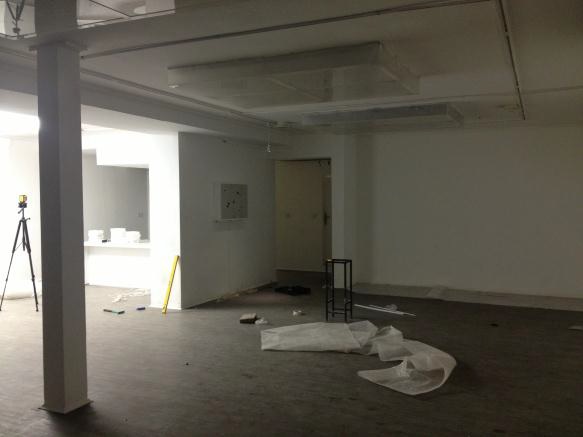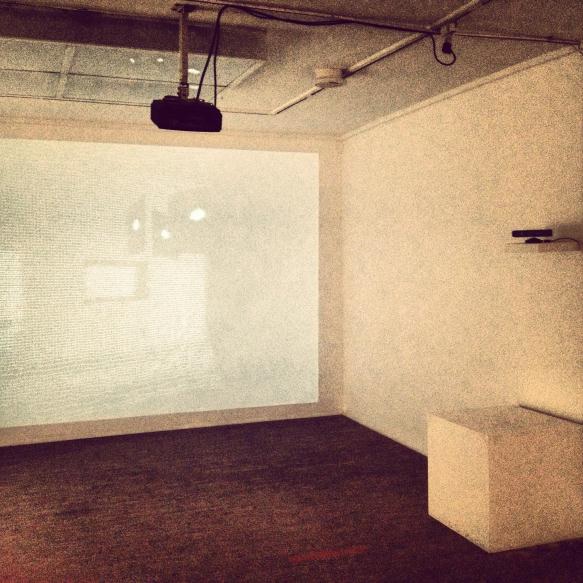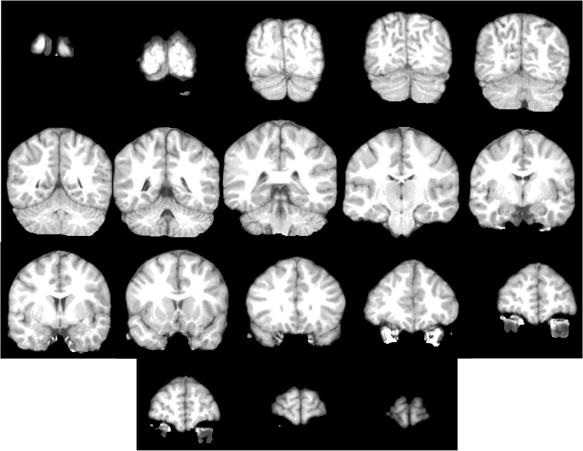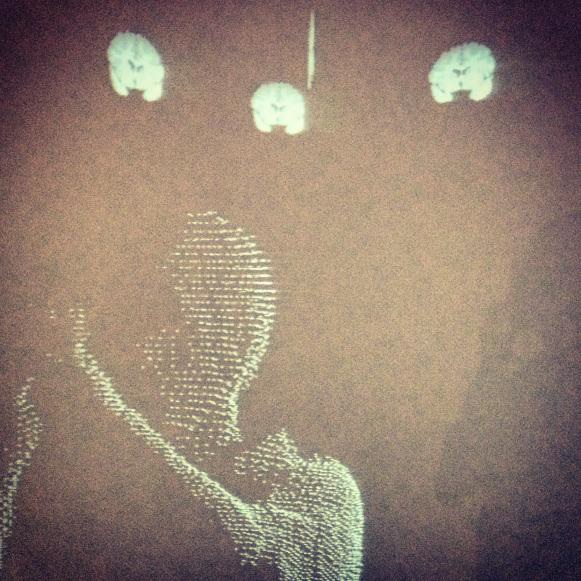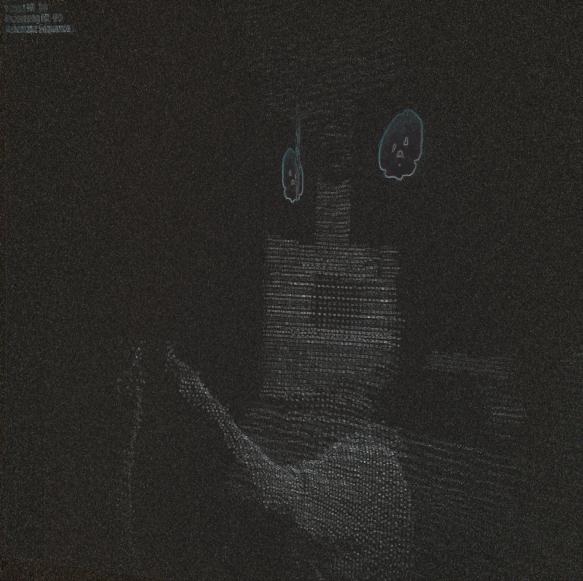Inevitably Inescapable | Interactive Video Installation
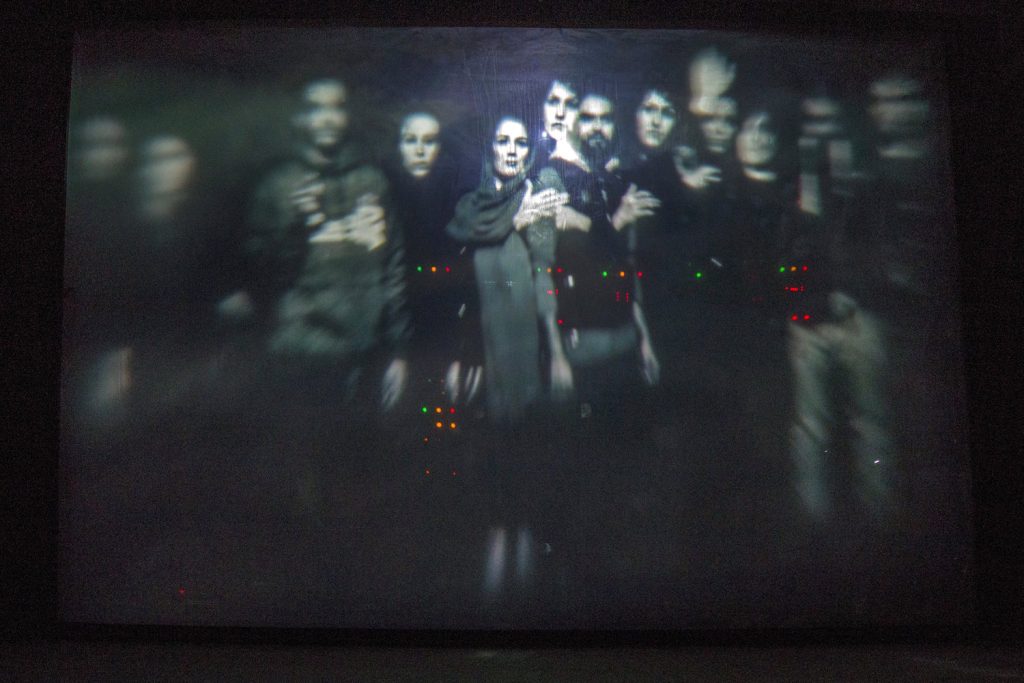
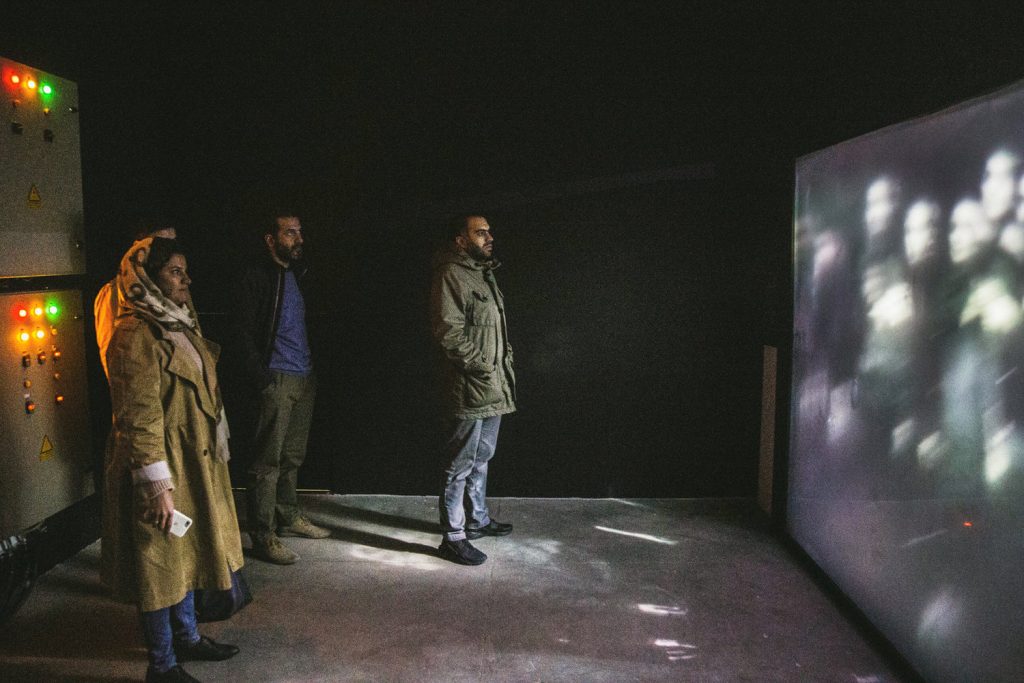
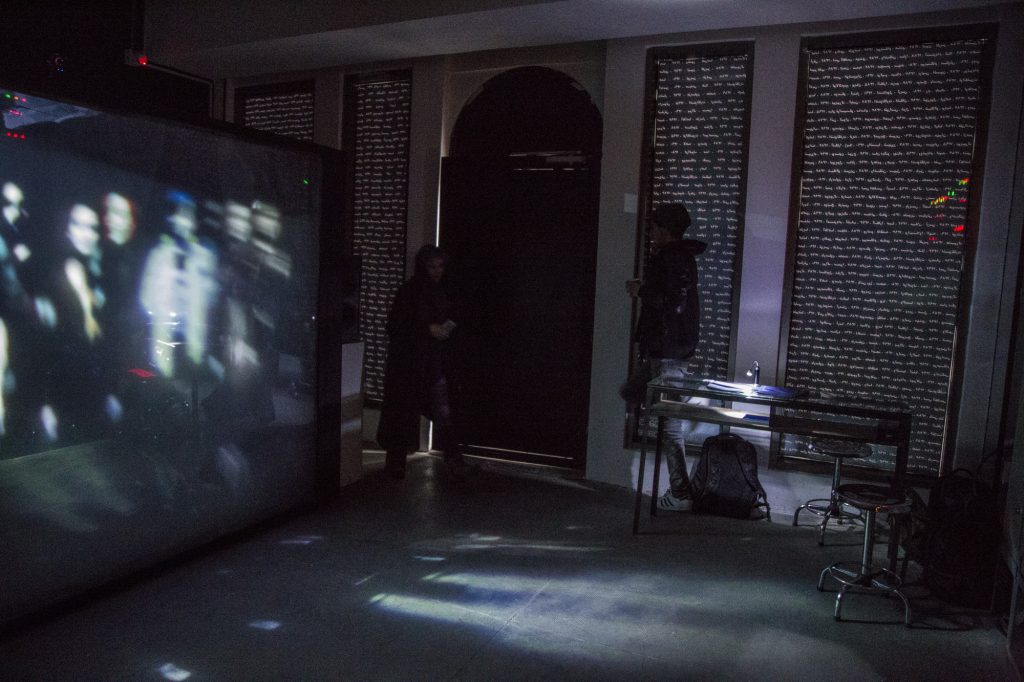
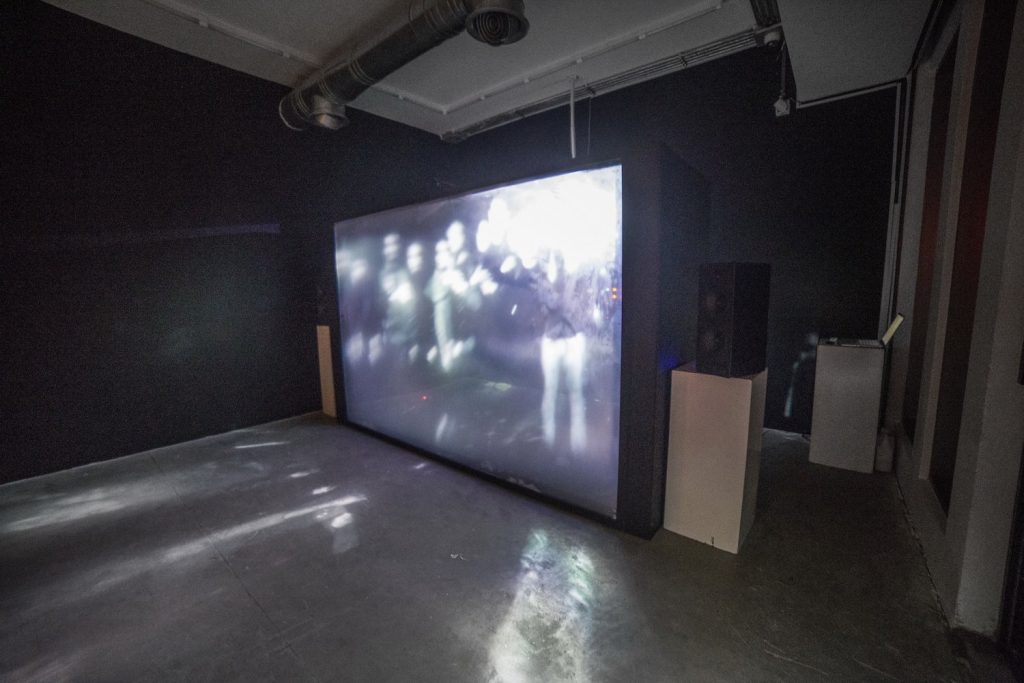
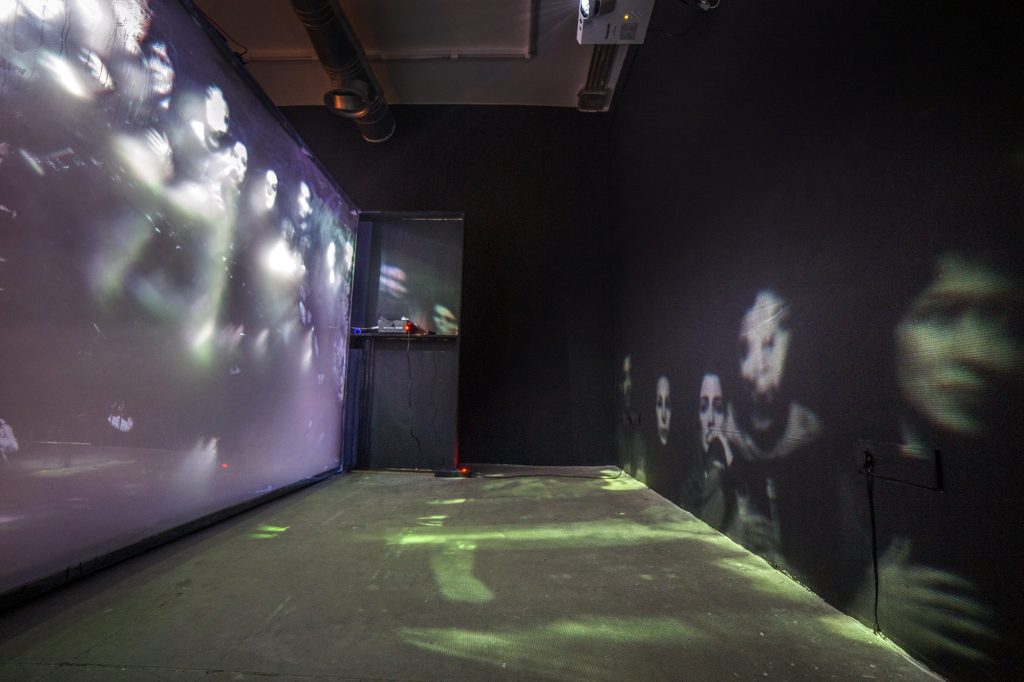
Dastan’s Basement is pleased to announce the opening of Sina Choopani and Soroush Gharehbaghi’s three-day collaborative event titled “Error 604: Interrupt on Overflow” on September 30, 2016. The event will be open for public viewing through October 3. This event is the last of Dastan’s collaborative projects this year, which included shows by Mimi Amini and Mamali Shafahi, the Ghassemi brothers, a two-part exhibition of works by Lohrasb Bayat and Amir Mohammadzadeh, and a duo show by Sadaf Hessamian and Atefeh Majidinezhad.
Sina Choopani’s works have been previously featured in a solo show at Dastan’s Basement, but this is Soroush Gharehbaghi’s first presentation at Dastan. Sina Choopani’s works vary between print, photography and installation, while Soroush Gharehbaghi has a career in software development, music production and sound engineering.
“Error 604: Interrupt on Overflow” is an experimental event, which seeks to create a ‘factory’ and a ‘production line’ inside the gallery space. During the event, Sina Choopani will go through the process of manual silk screen print-making based on a number of photographs, using the silk screen equipment installed at the Basement, along with applying paint to some prints after their production.
Soroush Gharehbaghi will use a series of his recent audio samples and musical ideas to for music production based on the silk screen and painting process. The artists, wearing work clothes, safety masks and gear, aim to hint at the ‘anonymity of the worker’.
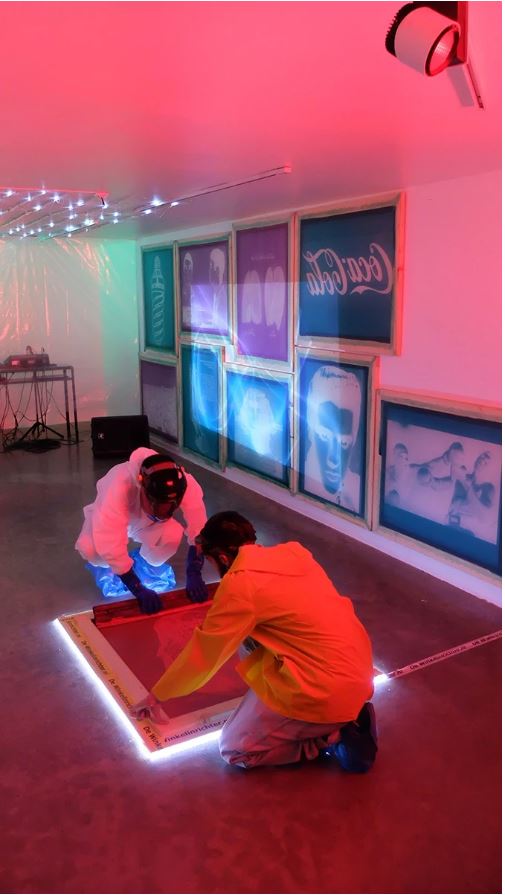
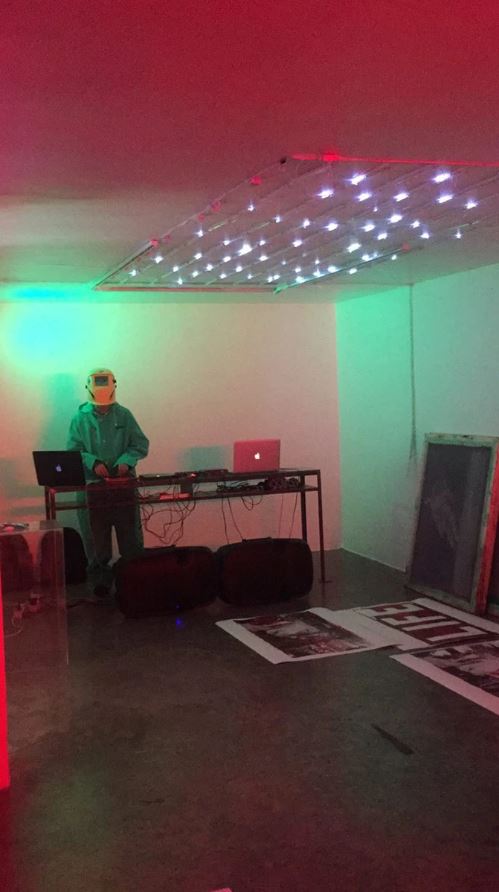
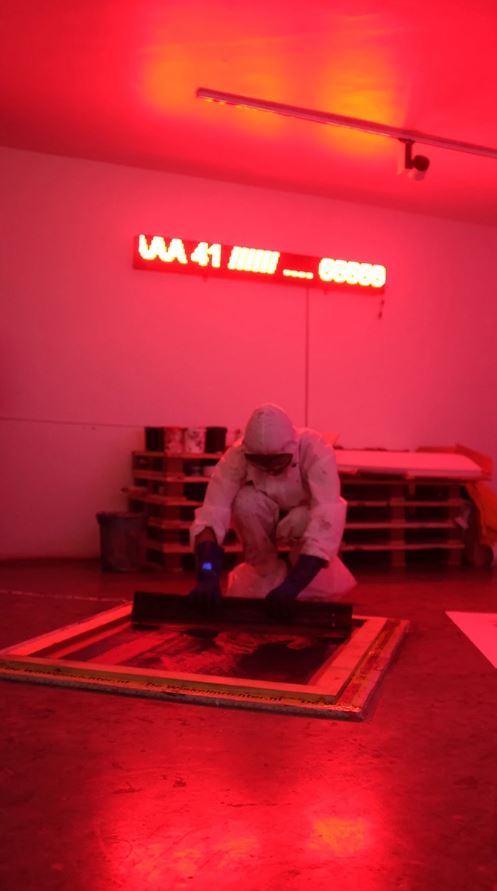
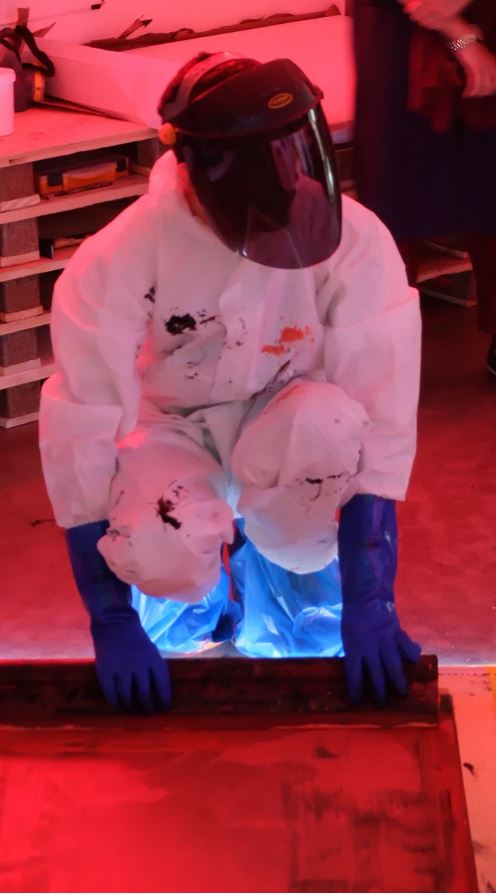
The artists describe the event as follows: “Error 604 is the instrument of making space. Its specific idiosyncrasy, its tonal and electronic/instrumental qualities, constitute the object of attention in this performance. In music, a cycle is a multi-part composition with a shared context of meaning. The parts normally represent variations on a theme. Error 604’s specific quality is primarily the result of its unusual spatial proportions. It is premiering a new era of audio visualization.”
One could search for both side of the meanings of dissent in Farsi (revolt – inspection) with the opportunity that can map out the way to make sense of the reason dissent happens in everyday life and how different bodies can perceive it in political events and what happens after dissent becomes essential part of reproduction of its means. The hypothesis for a better understanding of dissent, can wipe out any action that could be seen as revolt in the rational mind of state, compared to other calendars of time in the world. however, establishing satisfied communities with consensus for a scattered state of action cannot normally secure the upward inspection from the ruling state, which cannot avoid fractures of metaphysics pertaining violence as a result. Finding an explanation for a phenomenon that essentially appears not normal – like an earthquake leads to defining nature of things that is experienced by certain group of society and their behavior. Alongside this identified phenomena, there is also the practice of objects that are build but somehow didn’t follow their limits and still are being the memento of an action that remains as debris of a memory. Now, do objects last longer than people?
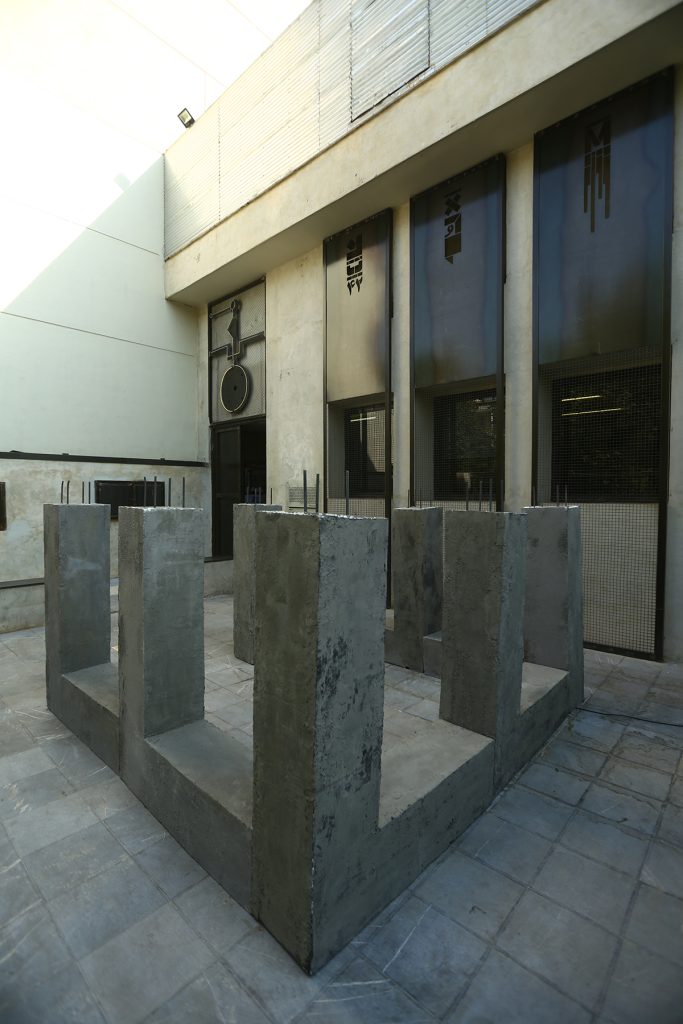
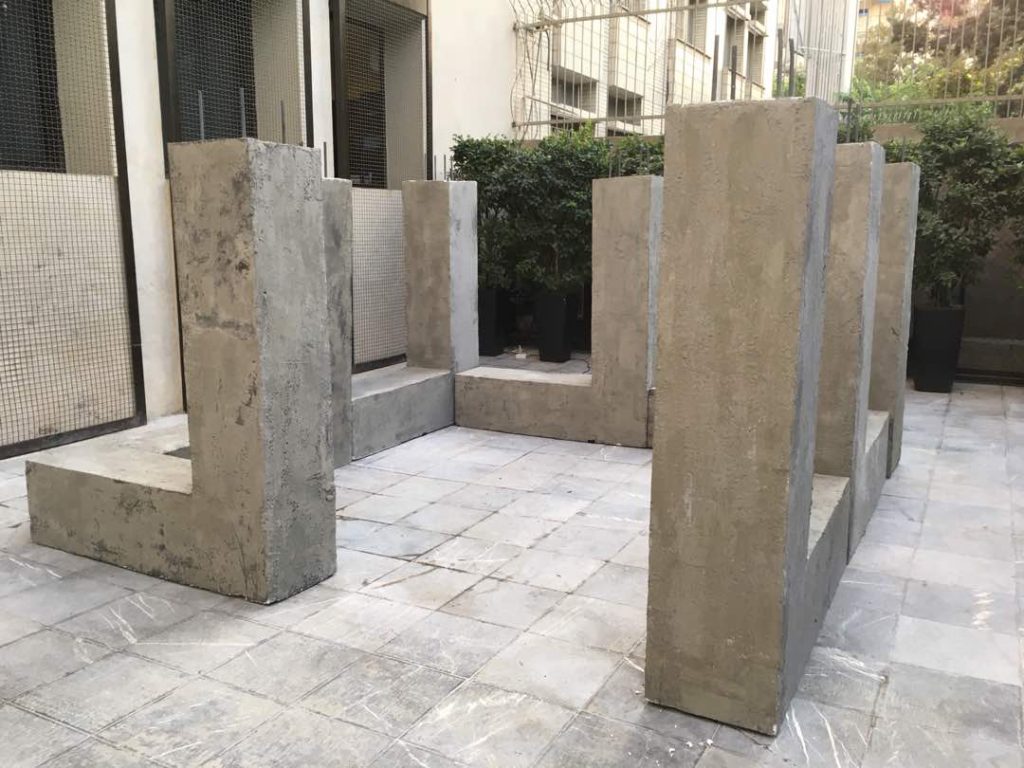
The Structure in a 90-square-meter open space in the courtyard of Mohsen Gallery interacts with the city and invites the audience to go beyond the boundaries of everyday life.this space is a possibility in which the artwork is defined by its reciprocal action with the adjacent street. As a result, we have the oppotunity to redefine the boudaries between the city and gallery space in a different way.
“Dissenture” was open to the public on aug31-sep21 2018.
consists of a parametric data sculpture that tells the story of the cities and people in the Middle East with a unique artistic approach. The main idea of “GL_TEXEL();” is to bring the 21st century approach to Data Mining in order to define new poetics of the space through new media arts to create a parametric data visualization that has intelligence, memory, and structure. Through a simulated graph, data feeds are the driver of the network that include a regional news traffic tracking algorithm, gathering regional information (news/broadcasts/published reports) throughout the Middle East. The graph has a light matter on its skin that can compute data and interact with the audience.
Beta version of implementation was on show to the public at Tehran Annual Digital Arts Expo.
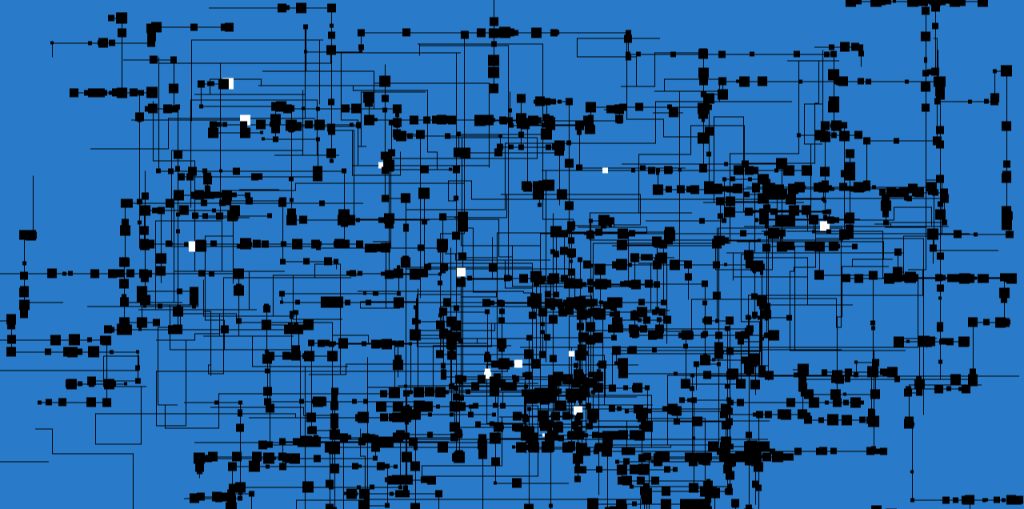
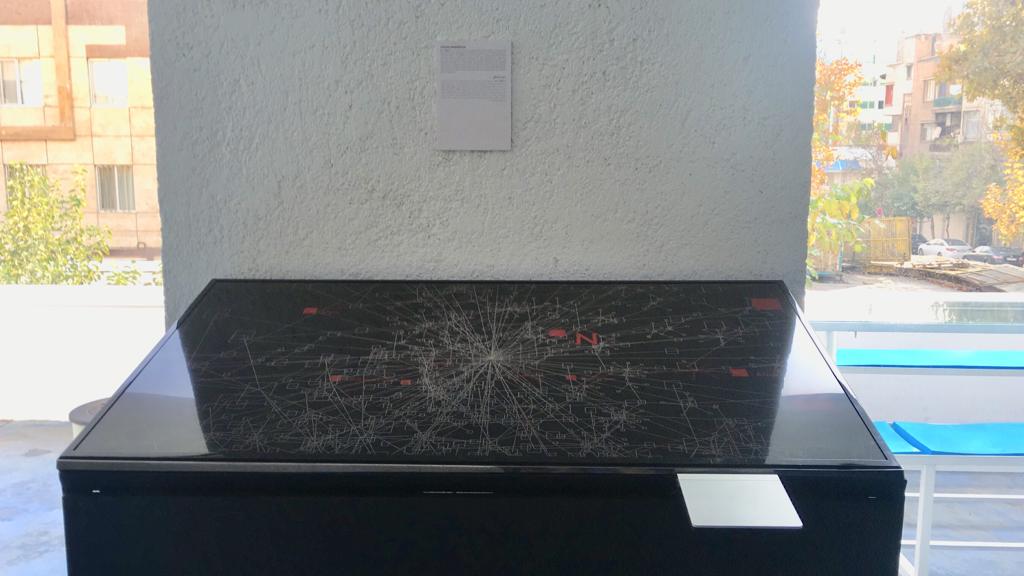
A simulation of The kinetic temperature is the variable needed for subjects like heat transfer, because it is the translational kinetic energy which leads to energy transfer from a hot area (larger kinetic temperature, higher molecular speeds) to a cold area (lower molecular speeds) in direct collisional transfer.
This was an installation in Tehran Annual Digital Art Expo(2016). The plan was to put arduino temperature sensor in exhibition space to track the temperature transition and visualize the output through a 3D graph generating in real time.the verticies in the graph is the temp change checkpoints through timeline.
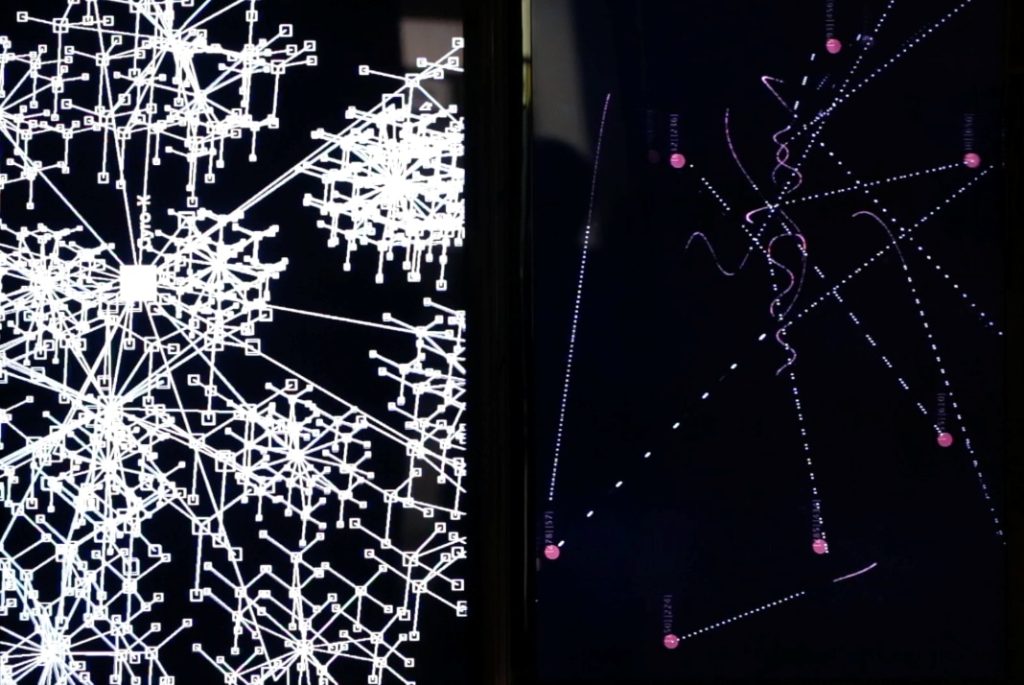
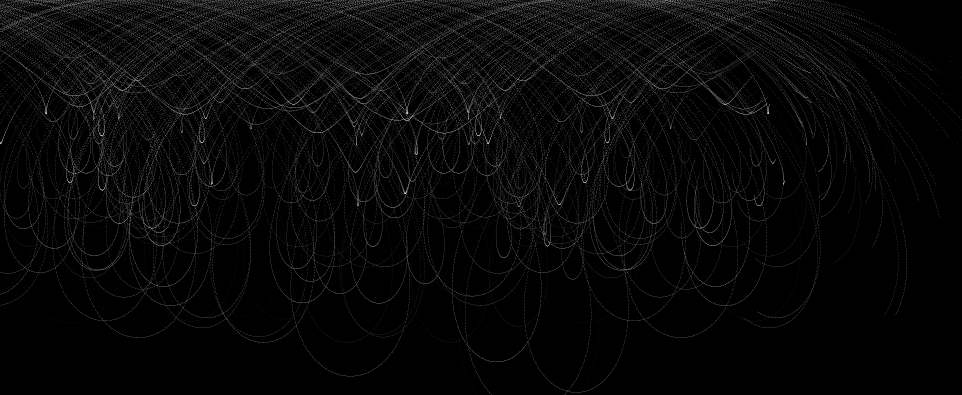
For another installation, Output of a data visualization patch of ACOV project, using IP security cameras of the gallery for tracking the visitors and monitor their position mapped on the architectural plan of the gallery building and show it real time as a interactive installation using pattern recognition and motion tracktion in open frameworks & processing:
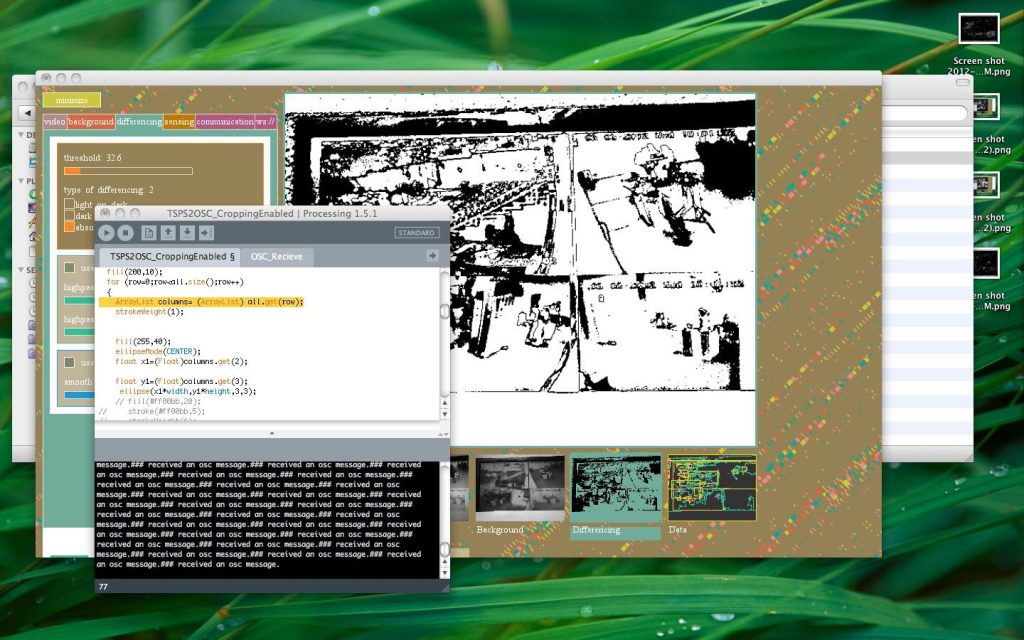
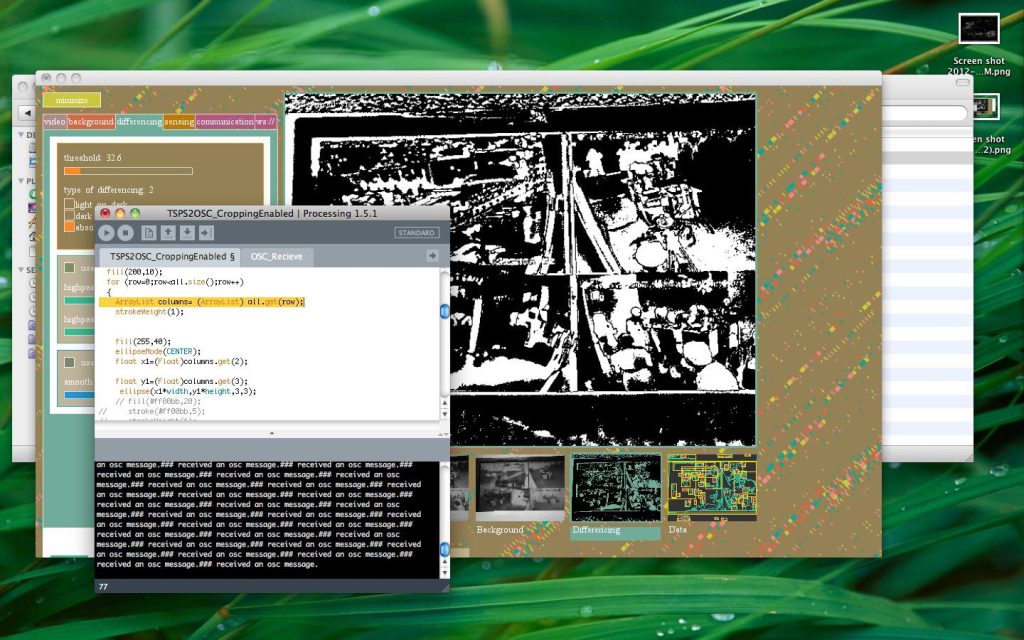
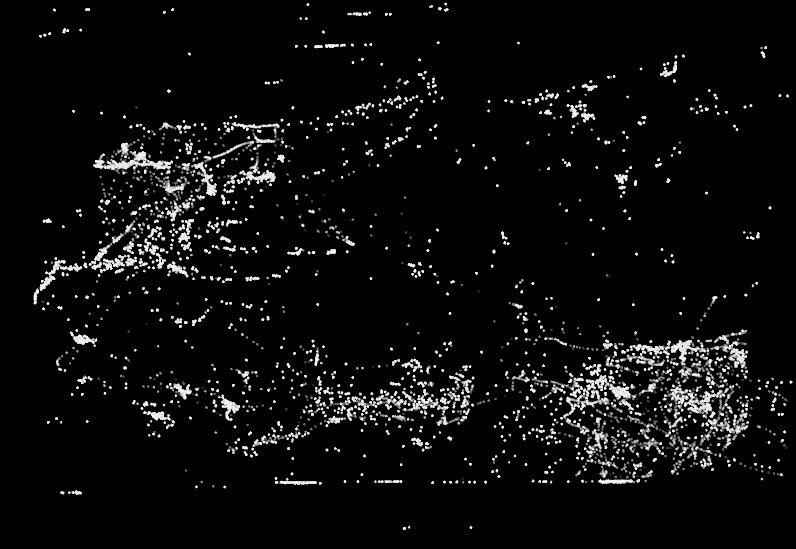
Unlike the paradigm of modern thinking that is arborescent, vertical, and includes determined boundaries; Rhizome is the vegetative root that is the most prominent symbol of postmodernism. If in tree diagrams, the vertical impose of the verb: to be is always present, in the horizontal circulation of rhizome, this verb converts itself into become.
In contrast to centered (even polycentric) systems with hierarchical modes of communication and pre-established paths, Rhizome is an acentered, nonhierarchical, non-signifying system without a general and without an organizing memory or central automaton, defined solely by a circulation of states. [ a thousand plateaus, deleuze and guattari ]
Collective Expansion is a data processing software, which through some strategies like long repetitive circles and highlighting the nodes, applies horizontal characteristics of a “rhizomatic” system in order to give the audience the visual experience of the verb: to become. Everyone can feed the collective expansion according to their desire (a collection of words which could be meaningful/nonsense/hybrid/pre-established) and after a while, there would be a chaotic, massive and monster-like sculpture in the room, which constitutes of multiple actions.
There are two different involving groups, and two represented graphs. The audience can take part in this interactive installation by either visiting the gallery or accessing the system via Internet.
The Rate of Participation can be detected through the speed of Expansion. The submitted words would be visible in two generated graphs. One of them simulates the interaction of outsiders, and the other one simulates the insider’s interaction. These two digital sculptures will be projected holographically.
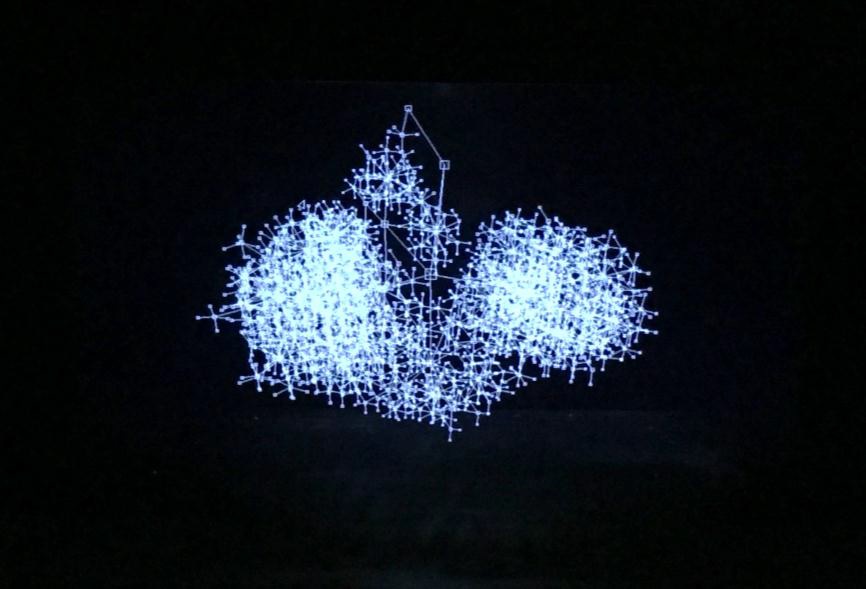
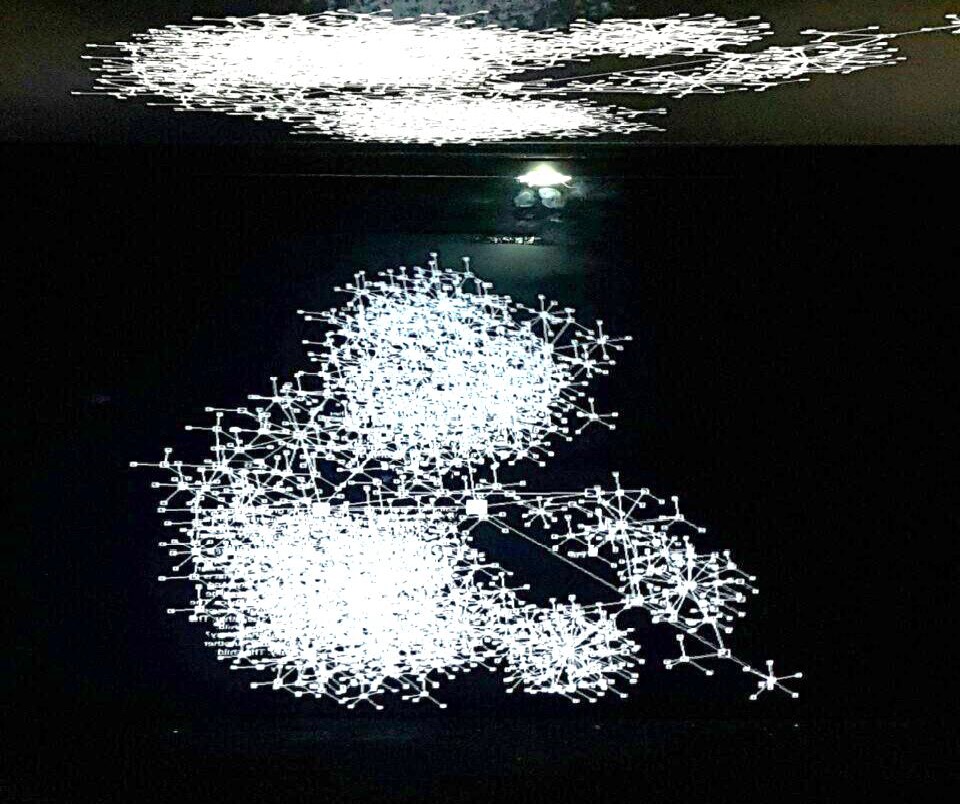
In collective Expansion, human networks, outside the gallery act singularly and divided from populaces, but in the gallery, common directions could intensify each other and emotions could have more sharing capacities. Multiple ideas would have the chance to transform to movements of the bodies in a collective dimension.
The Collective Expansion attempts to demonstrate the constituting power of the
audience’s desire and change their passivity vis-a-vis arborescent, vertical, stable and classified systems and converts it to some active movement.
“Rhizome is always in the middle…”
This project also presented for 72 hours at shirin art gallery in Tehran. poeple participated in process by adding words to our database at website http://collectiveexpansion.com and local audience submitted their words with a keyboard realtime at the gallery and the graph bellow was a sample state of the rhizome that were developing by their words.
Inspired by an image from Auschwitz, the artists turn their attention to the swarm of information, images and news that surround us in todays world. In this generative art installation, the audience is thrown into an ocean of images. Everything is quick and reminds us that by increasing the amount of information we possess, we do not simply increase our perception of the world. When faced with the vast pool of information about an incident, all we can do is to watch and listen. The mind, incapable of processing such huge amounts of data, has no opportunity to understand it. The line between reality and imagination fades; everything becomes surreal and flows away.



This project was also an interactive installation in Tehran Annual Digital Art Expo (TADAEX).a procedure that tracks photos(specially for middle east) from news channels like CNN, Euronews, etc, and runs an image processing algorithm on the photos and each time takes a cluster of pixels out of the image and merge them into a big collage.the whole process is realtime and photos are taken from the net.at last we have a big collage of the photos at the background.the key here is the clusters won’t be duplicate or repeated because of the A.I algorithm we wrote for the procedure.
In the natural world, ants (initially) wander randomly, and upon finding food return to their colony while laying down pheromone trails. If other ants find such a path, they are likely not to keep travelling at random, but to instead follow the trail, returning and reinforcing it if they eventually find food (see Ant communication).
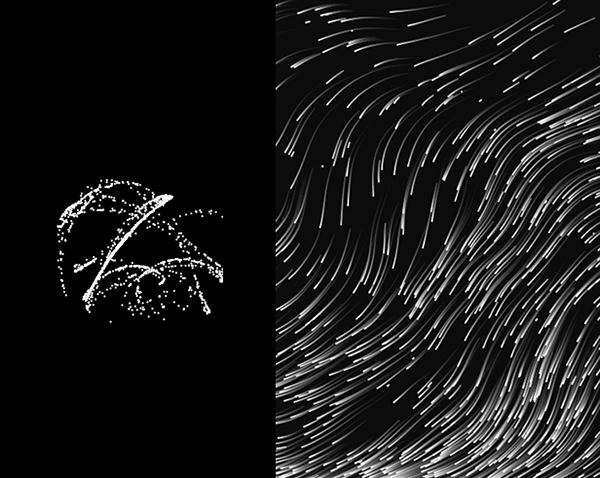
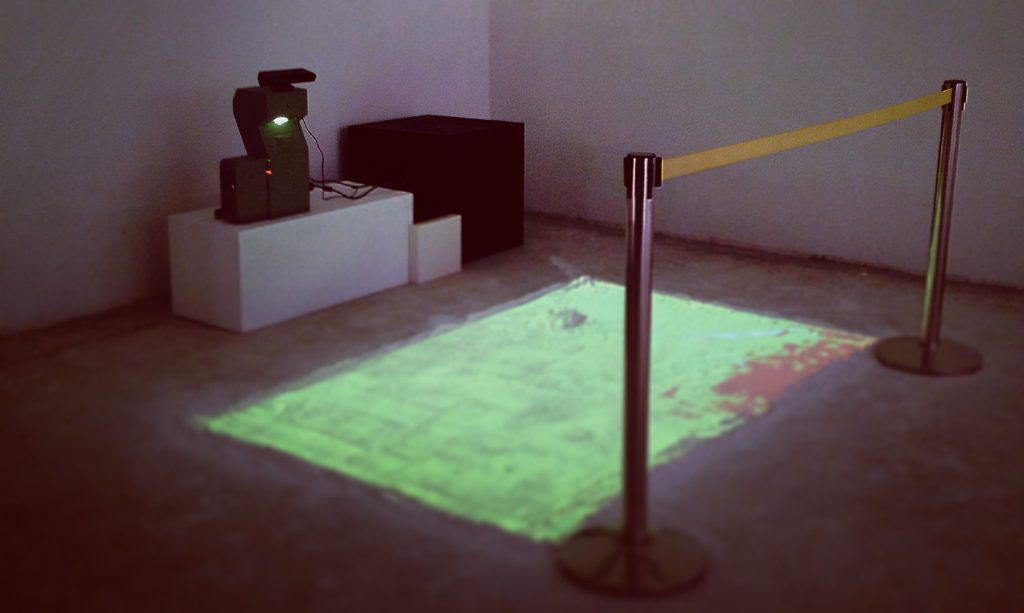
Over time, however, the pheromone trail starts to evaporate, thus reducing its attractive strength. The more time it takes for an ant to travel down the path and back again, the more time the pheromones have to evaporate. A short path, by comparison, gets marched over more frequently, and thus the pheromone density becomes higher on shorter paths than longer ones. Pheromone evaporation also has the advantage of avoiding the convergence to a locally optimal solution. If there were no evaporation at all, the paths chosen by the first ants would tend to be excessively attractive to the following ones. In that case, the exploration of the solution space would be constrained.
Thus, when one ant finds a good (i.e., short) path from the colony to a food source, other ants are more likely to follow that path, and positive feedback eventually leads to all the antsÕ following a single path. The idea of this installation is to mimic/visualize this behavior with Ósimulated antsÓ walking around the graph representing their problem to solve.They interact with audience & find their path through food source depending on marks that people are standing(positions) in our environment(installation area).
This project was also presented as an interactive installation in Tehran Annual Digital Art Expo (TADAEX).at this point, audience stand in the center of the colony’s environment (a 4*3 meters square sand & soil field).persons detected with e Kinect motion detection camera and the ants were following their paths through the persons & keep finding their food.
project BET (Brain Extraction Tool) is a collection of image analysis tools designed to process interactively on real-time scan of the human brain. It provides an automatic sequence to extract cortical surface mesh models from the Image, tools to register these to a labeled atlas to define anatomical regions of interest, and tools for processing diffusion imaging data. It also contains visualization tools for exploring these data, and can produce interactive maps of regional connectivity.
This project presented as an interactive installation in Tehran Annual Digital Art Expo (TADAEX). It consisted of a 700 MRI dataset. When a person stands in front of the camera (xbox Kinect), application creates a point-cloud and scans the size of the head and measured the size of brain realtime. Then showed the most similar image of the brain (MRI) from the dataset.
